 |
||||||
| T-RPMS Home | Editorial Board | T-RPMS in IEEE Xplore | Early Access | Manuscript Submission | ||||||
| FEATURED STORIES - JULY 2019 | ||||||
Magnetic Resonance Fingerprinting: Implications and Opportunities for PET/MRby Kathleen M. Ropella-Panagis, Nicole Seiberlich, Vikas Gulani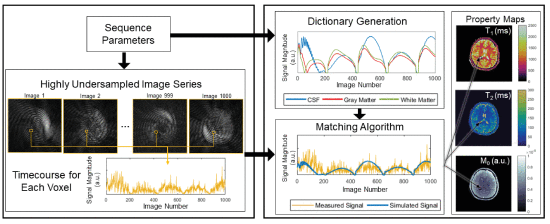 Magnetic resonance imaging (MRI) can be used to assess anatomical structure, and its sensitivity to a variety of tissue properties enables superb contrast between tissues as well as the ability to characterize these tissues. However, despite vast potential for quantitative and functional evaluation, MRI is typically used qualitatively, in which the underlying tissue properties are not measured and, thus, the brightness of each pixel is not quantitatively meaningful. Positron emission tomography (PET) is an inherently quantitative imaging modality that interrogates functional activity within a tissue, probed by a molecule of interest coupled with an appropriate tracer. These modalities can complement one another to provide clinical information regarding both structure and function, but there are still technical and practical hurdles in the way of the integrated use of both modalities. Recent advances in MRI have moved the field in an increasingly quantitative direction, which is complementary to PET, and could also potentially help solve some of the challenges in PET/MR. Magnetic resonance fingerprinting (MRF) is a recently described MRI-based technique which can efficiently and simultaneously quantitatively map several tissue properties in a single exam. Here, the basic principles behind the quantitative approach of MRF are laid out, and the potential implications for combined PET/MR are discussed. Read more... |
||||||
A Novel DOI Positioning Algorithm for Monolithic Scintillator Crystals in PET Based on Gradient Tree Boostingby Florian Müller, David Schug, Patrick Hallen, Jan Grahe, Volkmar Schulz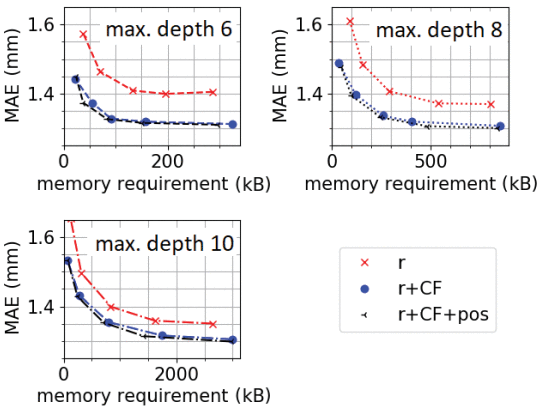 A preclinical insert for small animal simultaneous SPECT and MR imaging, in particular for imaging mouse brains, is presented. It consists of ten static magnetic resonance imaging (MRI)-compatible gamma cameras based on tiles of silicon photomultipliers readout by a multichannel ASIC and coupled to 5 cm $\boldsymbol \times $ 5 cm CsI(Tl) scintillators and to an MRI-compatible multipinhole collimator. Calibration and image reconstruction algorithm are illustrated. Mutual compatibility is demonstrated along with imaging performance that is comparable with other non-MR micro-SPECT systems: 0.9 mm tomographic spatial resolution across a transverse field of view of 15.6 mm, 12% energy resolution (at 140 keV), and 1105 cps/MBq sensitivity. Experimental results with phantoms (glass capillaries of 290 $ \mu \text{m}$ diameter and a mini Derenzo) are presented. Read more... |
||||||
Validation and Performance Assessment of a Preclinical SiPM-Based SPECT/MRI Insertby M. Carminati, F. M. Baratelli, M. Occhipinti, K. Erlandsson, K. Nagy, Z. Nyitrai, M. Czeller, A. Kühne, T. Niendorf, S. Valtorta, S. Belloli, R. M. Moresco, A. Savi, A. Iadanza, A. Falini, L. S. Politi, M. Cadioli, B. F. Hutton, C. Fiorini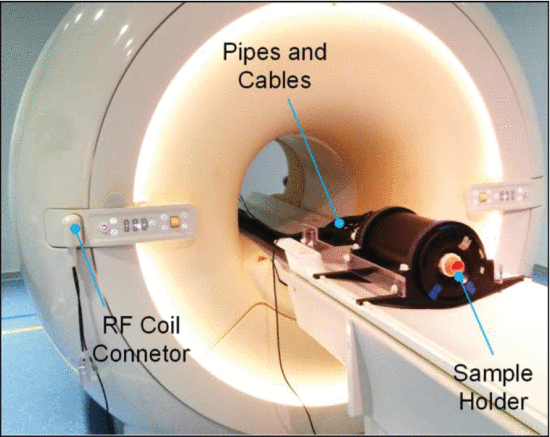 A preclinical insert for small animal simultaneous SPECT and MR imaging, in particular for imaging mouse brains, is presented. It consists of ten static magnetic resonance imaging (MRI)-compatible gamma cameras based on tiles of silicon photomultipliers readout by a multichannel ASIC and coupled to 5 cm $\boldsymbol \times $ 5 cm CsI(Tl) scintillators and to an MRI-compatible multipinhole collimator. Calibration and image reconstruction algorithm are illustrated. Mutual compatibility is demonstrated along with imaging performance that is comparable with other non-MR micro-SPECT systems: 0.9 mm tomographic spatial resolution across a transverse field of view of 15.6 mm, 12% energy resolution (at 140 keV), and 1105 cps/MBq sensitivity. Experimental results with phantoms (glass capillaries of 290 $ \mu \text{m}$ diameter and a mini Derenzo) are presented. Read more... |
||||||
Effect of PET-MR Inconsistency in the Kernel Image Reconstruction Methodby Daniel Deidda, N. A. Karakatsanis, Philip M. Robson, Nikos Efthimiou, Zahi A. Fayad, Robert G. Aykroyd, and Charalampos Tsoumpas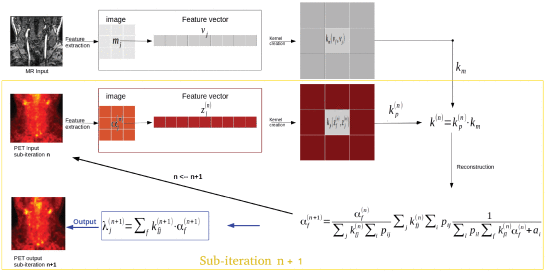 Anatomically driven image reconstruction algorithms have become very popular in positron emission tomography (PET) where they have demonstrated improved image resolution and quantification. This paper examines the effects of spatial inconsistency between MR and PET images in hot and cold regions of PET images using the hybrid kernelized expectation maximization (HKEM) machine learning method. Our evaluation was conducted on Jaszczak phantom and patient data acquired with the Biograph Siemens mMR. The results show that even a small shift can cause a significant change in activity concentration. In general, the PET-MR inconsistencies can induce the partial volume effect, more specifically the “spill-in” for cold regions and the “spill-out” for hot regions. The maximum change was about 100% for the cold region and 10% for the hot lesion using kernelized expectation maximization, against the 37% and 8% obtained with HKEM. The findings of this paper suggest that including PET information in the kernel enhances the robustness of the reconstruction in case of spatial inconsistency. Nevertheless, accurate registration and choice of the appropriate MR image for the creation of the kernel is essential to avoid artifacts, blurring, and bias. Read more... |
||||||
A Kalman-Based Approach With EM Optimization for Respiratory Motion Modeling in Medical Imagingby Rhodri L. Smith, Ashrani Aizzudin Abd Rahni, John Jones, Kevin wells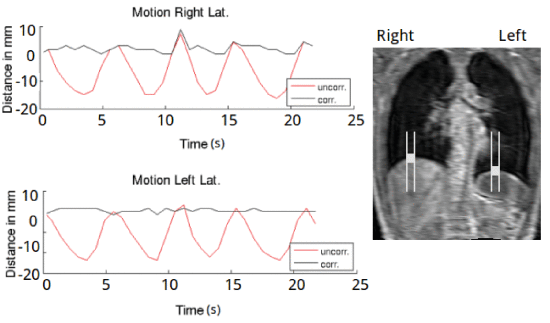 Recently, an exhaustive examination of 11 state-of-the-art MR-based attenuation correction (AC) concluded that there are currently a few methods showing similar results compared to the gold-standard, CT-based AC. While the study presented a thorough portfolio of metrics to quantify accuracy (bias) and quality, it lacked one of the most important metrics to quantify robustness that is critical for its clinical applicability: intrascanner reproducibility (repeatability). In this paper, we provide for the first time a study of the repeatability of one of the outperforming brain MR-based AC methods: the statistical parametric mapping (SPM)-based pseudo-CT approach. Read more... |
||||||
 |
||||||
A PUBLICATION OF THE IEEE NUCLEAR AND PLASMA SCIENCES SOCIETY |
||||||
| ||||||
|
Home |
Contact & Support |
Accessibility |
Nondiscrimination Policy |
Feedback |
Privacy and Opting Out of Cookies
© Copyright 2019 IEEE – All rights reserved. Use of this website signifies your agreement to the IEEE Terms and Conditions. A not-for-profit organization, IEEE is the world's largest technical professional organization dedicated to advancing technology for the benefit of humanity. [Response: Read Receipt]If you have questions about this mailing, or need assistance, please direct your inquiries to the IEEE Contact Center. Replies to this message do not reach IEEE. |
||||||